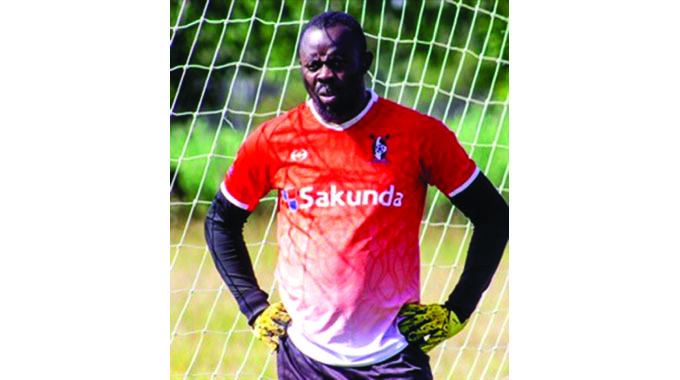The river between

Robson Sharuko Senior Sports Editor
WITHIN a 430km radius, dominated by the Kruger National Park, two national football teams — one taking its baby steps once again and the other rising like a phoenix from the ashes — plunge into battles tonight on contrasting missions.The Young Warriors take on Swaziland, in Lobamba tonight, in a friendly international being used by ZIFA as part of a cocktail of events to build a Warriors side, dominated by youthful players, which will represent the nation in the 2017 Nations Cup and 2018 World Cup qualifiers.
Across the border in Polokwane, a resurgent Bafana Bafana host Congo Brazzaville, in a 2015 Nations Cup qualifier, knowing that a victory at the Peter Mokaba tonight might all but give them a ticket to Morocco next year — the first time, in seven years, they would have qualified for Africa’s premier football tournament.
Although Bafana Bafana played at the 2013 Nations Cup finals, their ticket came by virtue of hosting the tournament, their last successful qualifying campaign had come during the 2008 Nations Cup finals and they had to qualify for the 2010 and 2012 Nations Cup finals.
There is a link between the events in Polokwane tonight and what will unfold in Lobamba — Ephraim “Shakes” Mashaba, the man who has masterminded Bafana Bafana’s stunning transformation — coached Swaziland for two years but Sihlangu never roared, under his tutelage, and he left in June 2010.
But that’s not the only link.
In the past eight years, the Warriors and Bafana Bafana have turned into Siamese twins of perennial failure, on the global football stage, and in their desperate search for the coach who brings the Midas Touch, they have both had eight different coaches — at a depressing average of a national coach every year.
Their coaching recruitment template has also been identical, if they aren’t recruiting a national coach from Brazil, to give him a retirement package that 365 days of uninterrupted sunshine in this part of the globe offers, then they are sticking with their homegrown boys for the big job.
The last four Warriors’ coaches have all been home-grown gaffers — Ian Gorowa, Rahman Gumbo, Madinda Ndlovu and Norman Mapeza and it’s the same story for Bafana Bafana, whose last four coaches have been recruited from home turf — Pitso Mosimane, Steve Khompela, Gordon Igesund and Mashaba.
However, while Bafana Bafana have taken off, and are flying right now with two wins, both secured away from home, and a draw in the 2015 Nations Cup qualifiers, yet to concede a goal and leading their group under the Shakes revolution, the Warriors are still grounded and waiting for someone to wake them from their slumber.
Bafana Bafana’s resurgence has been triggered by the arrival of Danny Jordaan, the experienced and respected administrator who celebrated a year as the South African Football Association president last month, whose victory in the SAFA elections last September could prove to be a huge turning point in that country’s football.
Jordaan, who replaced the ineffective Kirsten Nematandani as SAFA president, inherited an association that had recorded losses of R46 million (about US$4,6 million) last year, roughly just about the US$5 million debt that has been haunting ZIFA, and R56 million (about U$5,6 million) losses in 2012, despite huge financial injections from FIFA in the wake of the 2010 World Cup success story.
The new SAFA boss also found an association stalked by a damaging match-fixing scandal, which remains unresolved, and which forced their technical partner, Puma, to walk away fearing collateral damage, on their global brand, from their association with the South Africans.
“Following match-fixing allegations made against SAFA, along with inappropriate responses from within the football organisation (including the suspension of senior officials), Puma terminated the contract with immediate effect,” the German sportswear giant said in a statement.
“Puma abides by a code of ethics in all areas of its business operations and expects its partners to adhere to the same values.” Soon, banking giant ABSA, one of the biggest sport sponsors in South Africa, also cut their ties with SAFA, further depleting coffers reeling from capital flight.
But Jordaan promised to get sponsors back into the SAFA corner, in his manifesto and, just four months after taking over as SAFA president, he pulled a coup by tying a five-year deal with Nike to provide kit for all national teams, training equipment and match balls.
Jordaan hired Ernest and Young, to improve the SAFA financial management, employed a number of cost-cutting measures, brought on board a number of sponsors and last Saturday, at the association’s first annual meeting since his election, the organisation announced a profit of R10 million from R46 million losses at the same time last year.
Revenue shot up by 35 percent, in just one year, a new R1 billion TV deal with Siyaya TV has been signed, which will bring R175 million a year and under Jordaan’s watch, SAFA made a cool R100 million in just one year.
Jordaan has also shaken the football structures, with the Motsepe Foundation pouring in R40 million into the Lower Divisions, over a period of five years, R3million coming from Sasol for the SAFA Development Agency and a number of initiatives, to try and identify and develop teenage talented South African footballers, being undertaken.
The national teams have responded and the South African Under-17 and Under-20 sides have both qualified for the African Youth Championships and, last Saturday, they were handed financial rewards by Sports Minister Fikile Mbalula.
While Bafana Bafana can move a step closer to qualifying for their first Nations Cup finals, in six years, with a win in Polokwane tonight, the Warriors remain stuck in a slumber, the ZIFA leadership weighed down by a debt that is ballooning out of control and property, including that donated by FIFA for development purposes at the ZIFA Village, being attached by debtors.
Their fans can only watch, in envy, at what is happening across the Limpopo where one leader, in just one year, has completely changed the face of South African football and, in the process, revived the national Under-17 and Under-19 sides and Bafana Bafana, into competitive teams that are cheering the spirits of their nation.








Comments